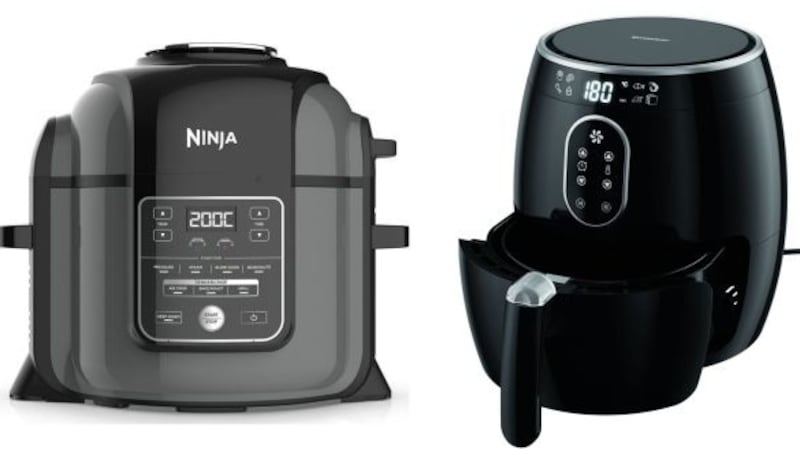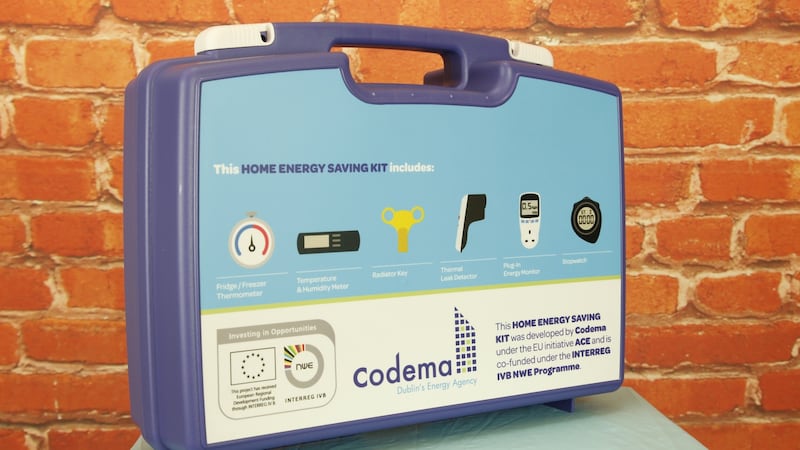There is no getting away from the fact that household bills are rising and we all need to make changes to help reduce our own energy costs and in turn, do our bit for the environment.
So, while even the simplest changes such as putting appliances on a timed programme to run during the night, wearing an extra layer rather than turning up the thermostat and keeping lights switched off when rooms are not in use, will help to make a difference, some people, like Sean Mac Gabhann, have taken things a step further.
“After we [he and partner Niamh Smith] moved to Sligo at the beginning of the year, the energy crisis had really begun to take hold and we realised we had to do something to keep bills under control,” he says. “We got a back boiler on a wood-burning stove, which has really helped with keeping home heating expenses at bay but the real issue was with electricity usage.
“So now, we have two long-range EVs (electric cars), which itself is another huge help and since we installed solar panels, there is a marked reduction in our electricity consumption from the grid — and as prices are going up, anything to reduce bills is a huge help.”
Living with her partner in Cork, Cathy Fitzgibbon has also made changes, which she says, not only benefit her pocket but also her lifestyle.

“I bought an air fryer two years ago during the first lockdown and now use it most evenings to make quick, tasty and convenient home cooked dinners,” says the ‘Culinary Celt’, so-called because she has turned her passion for food education into tackling obesity.
“Energy-wise it is one of the most efficient things I’ve introduced into my kitchen in the last 14 years. Unlike my conventional electric fan oven, which has to be preheated, the air fryer goes from room temperature to 200 degrees in a matter of minutes. So it’s extremely convenient and doesn’t consume as much electricity as my main oven, helping to reduce my carbon footprint.
“I love the fact that the energy it uses is efficiently focused on cooking. And experimenting with it has been a really enjoyable learning experience. Due to my small household family unit, its compact capacity makes it a fantastic energy saving appliance which I’ve come to treasure.”
[ How to cut your energy costs at home and save €500 before next summerOpens in new window ]
Based in Carlow, Caroline Cunningham says she is also very conscious of energy use together with her partner and his two young sons, are currently using less than six units of electricity per day and less than half a unit of gas per day. She expects this to rise over the coming months, but believes they are still below the national average.
“While we’re conscious of our usage, we’re not depriving ourselves in terms of heating, cooking and washing, we’re just being smart about our usage for the sake of the environment and our financial wellbeing,” she says. “When we moved in here two years ago, it was obvious that the builders didn’t follow the (energy standard) specifications so we had to invest and make improvements ourselves.
We looked at saving water — rainwater harvesting, aerators, and shorter showers — well before the water charges, as it takes energy to make potable water
“We did this with double insulation in the attic, we installed an energy-efficient gas boiler for central heating and hot water and switched to a gas hob for most of our cooking. We also replaced all bulbs with energy saver ones and our dehumidifier makes a considerable difference to heating costs by taking moisture out of the air so the room heats faster.
“We turn off lights and equipment when not in use, have hooked up our dishwasher to the hot water supply — which is heated by gas — and we’re about to do the same with our washing machine. We do laundry once or twice a week, hang clothes outside to dry (when possible) and monitor our usage as we are still finding ways to reduce energy bills.”

Keeping costs down is one of the reasons why Niall O’Toole is way ahead of the curve. After moving from Dublin to Kildare in 2007 with his wife and children, he discovered that their new home was draughty, mouldy and cold. So, he decided that they needed to take matters into their own hands. After a lengthy process putting right the wrongs in the building, they made plans to future-proof their home — and their lives — as they had an inkling of what was to come.
“The Government announced a new road tax based on claimed CO2 emissions and we decided to look at a more efficient car as we were both commuting to Dublin every day,” he says. “We went from a 250bhp sports car doing 30-35mpg to a hybrid doing 55mpg real world, so a lot of the fuel saving went to pay for the loan but we were doing it for environmental reasons.” They have since upgraded to an EV.
Their most simple but effective change, was to ‘block the letter box’ and replace with an outdoor postbox which drastically reduced draughts and increased temperatures
“Around the same time we started looking at solar PV to provide electricity and cut our emissions further. We were on the Microgen Pilot scheme, which meant we got paid for our exported electricity for several years, even though the system is much smaller than the typical system now and zero grants available — and we are still operating with the same average yearly output as the first year.
“We insulated the attic, our cold tank and as much pipework as we could. The heating system basically had zero controls apart from a timer. So I went about installing motorised valves, thermostats and controls which made the system significantly more efficient and cut our oil bill by hundreds of litres a year which not only helped our pockets but also our emissions.”
As they continued to try to reduce their energy output, the family also tackled their lighting system so all bulbs are now LED and security lights are solar powered. They also installed smart controls and timers and, their most simple but effective change, was to ‘block the letter box’ and replace with an outdoor postbox which drastically reduced draughts and increased temperatures.

“We also looked at saving water — rainwater harvesting, aerators, and shorter showers — well before the water charges, as it takes energy to make potable water,” says Niall.
“But eventually we hit a wall as we really couldn’t improve any further without changing the windows, doors and insulation. So we finally got some money from the builder and I ordered PassivHaus spec windows and doors which I installed myself [following a training course] and these made a huge difference to heat retention, noise reduction and airtightness of the house. And we haven’t run our oil boiler since — we have an electric stove which is all the heat we use, running on night rate and heating the house (and water) in the early morning.
“We are now trying to go room by room to upgrade the insulation and airtightness and I also built a DIY home battery as we were always getting lots of power cuts. This was originally just for emergency use but worked so well, that I have it running our kettle and microwave on their own circuit, all from an off-grid solar panel wired up in the back garden.
“Now, even with electric heating and an EV, our bills are under €100 a month at today’s prices.”
How to: Try these steps to keep costs down this winter
1. Find out where your heat escapes — get a Home Energy Saving kit from your local library
2. Put a back boiler on a wood-burning stove
3. Get an electric car
4. Install solar panels
5. Get an air fryer
6. Insulate the attic
7. Wrap pipes with insulation
8. Hook up appliances such as a dishwasher and washing machine to the hot water supply if it’s run by gas, as this is typically cheaper than electricity
9. Dry your clothes outside (where possible)
10. Seal up the letter opening on your door and get a box erected outside instead
11. Switch to energy saving bulbs
12. Get a new energy efficient boiler
13. Use a dehumidifier to cut heating costs
14. Turn off lights when not in use
15. Consider getting heating controls to cut down on usage
16. Seal draughty windows — Houseworks: quick fixes for draughty windows
17. Bleed your radiators — The Gaff Goddess has the key to fixing that
18. Swap your curtains for thermal equivalents
19. Seal your chimney
20. Get draught excluders for your doors — Dodge the draught











